- Clone
- 7F11A10 (See other available formats)
- Regulatory Status
- RUO
- Other Names
- T-cell-specific transcription factor 1, transcription factor 7, TCF7
- Isotype
- Mouse IgG1, κ
- Ave. Rating
- Submit a Review
- Product Citations
- publications
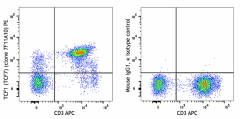
-

Human peripheral blood lymphocytes were surface stained with CD3 APC and then treated with True-Nuclear™ Transcription Factor Buffer Set. Cells were then stained with TCF1 (TCF7) (clone 7F11A10) PE (left) or mouse IgG1, κ PE isotype control (right).
| Cat # | Size | Price | Save |
|---|---|---|---|
| 655207 | 25 tests | ¥31,020 | |
| 655208 | 100 tests | ¥79,200 |
TCF1 is the first identified member of the T-cell-specific transcription factor family. It plays an important role in T cell development and differentiation. TCF1 is inactivated by association with the transcriptional repressor TLE proteins. During Wnt signaling, the transcriptional coactivator CTNNB1 accumulates and, in turn, replaces the transcriptional repressor associated with TCF1. Interaction with CTNNB1 results in transactivation of TCF1 target genes. Deletion of TCF1 causes massive apoptosis of double positive thymocyte, suggesting that TCF1 is required for thymocyte survival during T cell development. In addition to its function in thymus, TCF1 promotes T cell differentiation to Th2 cells in the periphery through transcriptional activation of GATA3.
Product DetailsProduct Details
- Verified Reactivity
- Human
- Antibody Type
- Monoclonal
- Host Species
- Mouse
- Immunogen
- Partial TCF1 recombinant protein (116-334 aa)
- Formulation
- Phosphate-buffered solution, pH 7.2, containing 0.09% sodium azide and BSA (origin USA)
- Preparation
- The antibody was purified by affinity chromatography and conjugated with PE under optimal conditions.
- Concentration
- Lot-specific (to obtain lot-specific concentration and expiration, please enter the lot number in our Certificate of Analysis online tool.)
- Storage & Handling
- The antibody solution should be stored undiluted between 2°C and 8°C, and protected from prolonged exposure to light. Do not freeze.
- Application
-
ICFC - Quality tested
- Recommended Usage
-
Each lot of this antibody is quality control tested by intracellular flow cytometry using our True-Nuclear™ Transcription Factor Staining Protocol. For flow cytometric staining, the suggested use of this reagent is 5 µL per 106 cells in 100 µL volume. It is recommended that the reagent be titrated for optimal performance for each application.
- Excitation Laser
-
Blue Laser (488 nm)
Green Laser (532 nm)/Yellow-Green Laser (561 nm)
- Product Citations
-
- RRID
-
AB_2728491 (BioLegend Cat. No. 655207)
AB_2728491 (BioLegend Cat. No. 655208)
Antigen Details
- Structure
- 384 amino acids, predicted molecular weight of 42 kD. Contains a HMG box DNA binding domain and a CTNNB1 (β-catenin) binding domain.
- Distribution
-
Nucleus
- Function
- TCF1 is a transcription factor, involved in the canonical Wingless/Integration 1 (Wnt) signaling pathway. TCF1 is essential for survival of CD4+CD8+ double positive thymocytes and differentiation of T cells in the periphery.
- Interaction
- TCF1 interacts with CTNNB1, TLE1, TLE2, TLE3, TLE4, and AES.
- Cell Type
- Tregs
- Biology Area
- Cell Biology, Immunology, Transcription Factors
- Molecular Family
- Nuclear Markers, TCRs
- Antigen References
-
1. Mao CD, et al. 2011. Crit. Rev. Eukaryot. Gene Expr. 21:207.
2. Germar K, et al. 2011. P. Natl. Acad. Sci. USA 108:20060.
3. Wang R, et al. 2011. J. Immunol. 187:5964.
4. Weber BN, et al. 2011. Nature 476:63.
5. Jeannet G, et al. 2010. P. Natl. Acad. Sci. USA 107:9777.
6. Staal FJ, et al. 1999. Int. Immunol. 11:317. - Gene ID
- 6932 View all products for this Gene ID
- Specificity (DOES NOT SHOW ON TDS):
- TCF1
- Specificity Alt (DOES NOT SHOW ON TDS):
- TCF1
- App Abbreviation (DOES NOT SHOW ON TDS):
- ICFC
- UniProt
- View information about TCF1 on UniProt.org
Related FAQs
- What type of PE do you use in your conjugates?
- We use R-PE in our conjugates.
Other Formats
View All TCF1 Reagents Request Custom Conjugation| Description | Clone | Applications |
|---|---|---|
| Purified anti-TCF1 (TCF7) | 7F11A10 | WB,ICC,IHC-P |
| Alexa Fluor® 647 anti-TCF1 (TCF7) | 7F11A10 | ICFC |
| PE anti-TCF1 (TCF7) | 7F11A10 | ICFC |
| Direct-Blot™ HRP anti-TCF1 (TCF7) | 7F11A10 | WB |
Customers Also Purchased
Compare Data Across All Formats
This data display is provided for general comparisons between formats.
Your actual data may vary due to variations in samples, target cells, instruments and their settings, staining conditions, and other factors.
If you need assistance with selecting the best format contact our expert technical support team.
-
Purified anti-TCF1 (TCF7)
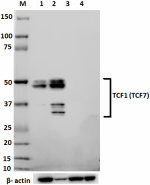
Total cell lysate from Jurkat (lane 1), Molt-4 (lane 2), HeL... 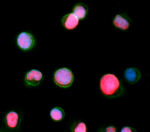
Jurkat cells were fixed with 4% PFA for ten minutes, permeab... 
IHC staining using purified anti- TCF7 antibody (clone 7F11A... -
Alexa Fluor® 647 anti-TCF1 (TCF7)
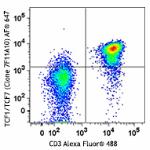
Human peripheral blood lymphocytes were surface stained with... 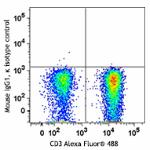
-
PE anti-TCF1 (TCF7)

Human peripheral blood lymphocytes were surface stained with... -
Direct-Blot™ HRP anti-TCF1 (TCF7)
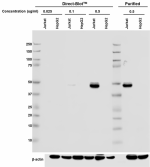
Western blot analysis of 15µg cell lysates from Jurkat (high... 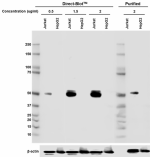
Western blot analysis of 15µg cell lysates from Jurkat (high...









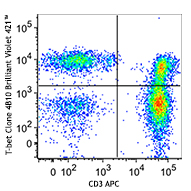






Follow Us